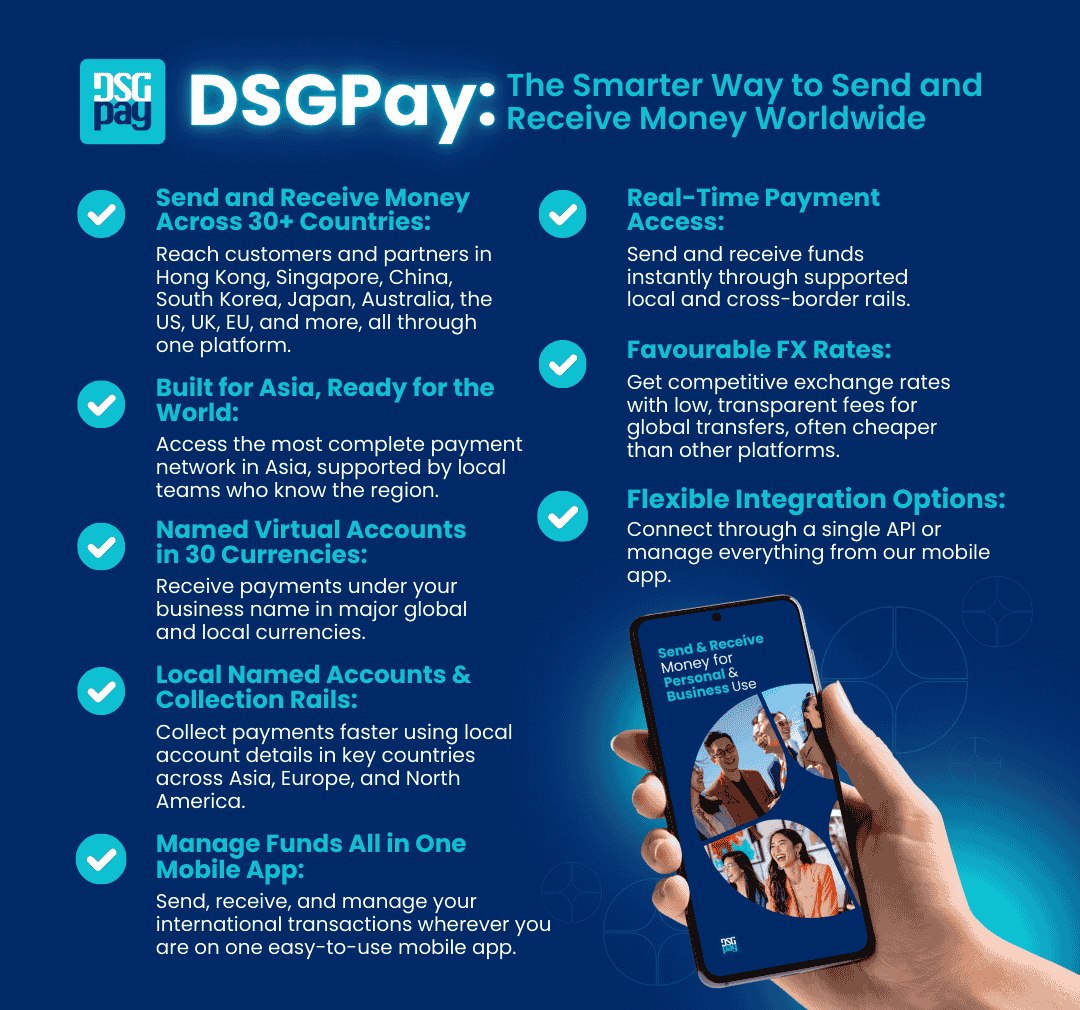Transferring money to Australia should be simple, not a slow and confusing process filled with delays and surprise fees. Whether you are helping family, covering tuition, managing property costs or paying a business invoice, trying to send funds to Australia can quickly become more of a hassle than it should be.
If you have ever thought, “There must be a better way,” you are probably right. This guide walks you through the most cost-effective, trustworthy and easy-to-use ways to send funds to Australia in 2025.
Let’s get started!
Table of Contents
Key Takeaways:
- Australia received around US$1.73 billion in inbound remittances in 2024, highlighting just how many people are actively seeking smarter ways to send funds there.
- Digital platforms like Wise and Revolut help send funds to Australia with lower fees and fast delivery.
- OFX and Xe are great for large amounts, with no upfront transfer fees.
- Crypto is fast and low-cost, but it works best for users comfortable with wallets and exchanges.
- Bank transfers are secure but often come with high fees and slower processing times.
- Cash pickup options like Western Union and MoneyGram are useful for urgent transfers.
- Always check the total cost, including the exchange rate and fees, before sending money.

5 Cheapest Ways to Send Funds to Australia
Let’s take a look at the five cheapest and most reliable ways to send funds to Australia in 2025.
1. Digital Money Transfer Platforms
These platforms are a simple way to move money without the usual bank hassle. You can send and receive funds online, track progress in real-time, and often pay less in fees.
Some are perfect for everyday payments, and others are built for international transfers or paying remote teams.
Here’s a breakdown of the most popular digital money transfer platforms to send funds to Australia, including fees and delivery times, based on a USD 1,000 transfer as of July 2025.
Note: Each platform has a unique edge; from Wise’s low transparent fees to OFX’s no-cost high-value transfers. Choose the one that aligns best with your needs, budget, and how fast your recipient in Australia needs the money.
Pros:
- Real-time transaction processing.
- Enhanced security with encryption and biometrics.
- Lower operational and processing costs.
- Seamless integration with business platforms.
Cons:
- Exposure to cyber threats and fraud.
- System downtime can disrupt transactions.
- Hidden fees from gateways or card networks.
- Limited access for non-digital or rural users.
Best for: Handling frequent digital transactions with ease, both locally and internationally.
2. Bank Transfers
Bank transfers remain one of the more dependable ways to send funds to Australia, particularly if you’re using well-known names like Bank of America, HSBC, Citibank or Wells Fargo. Most allow you to send funds directly through their app or online banking, which adds a bit of convenience.
That said, just because it’s familiar doesn’t always make it the best option. Bank transfers can be slow, fees can add up, and exchange rates are often less competitive. If your bank isn’t strong on international payments, you could end up spending more than necessary.
Bank transfer costs to send funds to Australia (as of July 2025):
Pros:
- Secure and widely accessible.
- Familiar and easy to use through existing bank accounts.
- No strict limits on transfer amounts.
- Clear transaction records for tracking.
Cons:
- High transfer fees.
- Poor exchange rates with added markup.
- Slow processing time (3–5 business days).
- Lack of fee transparency in some cases.
Best for: Sending large institutional or official payments where speed isn’t a concern
3. Cash Pickup Services
Cash pickup is a good option if the person in Australia doesn’t have a bank account or needs the money quickly. It allows you to send cash that they can collect from a nearby location, often within minutes.
Just keep in mind that while it’s fast and convenient, it’s not always the most cost-effective choice.
How It Works:
- The sender initiates the transfer online or via an app.
- The recipient picks up the cash at a partner location, such as a local post office or retail outlet, with an ID and a reference number.
Here’s a quick comparison of popular cash pickup services to send funds to Australia.
Pros:
- Instant access for the recipient.
- No bank account required.
- Extensive pickup network.
- Familiar and easy to use.
Cons:
- Higher fees.
- Exchange rate margins.
- Potential hidden charges.
- Safety risks when collecting large cash amounts.
Best for: Unbanked recipients or urgent family transfers
4. Bank Drafts and Cheques
Bank drafts and cheques are still around, but they’re rarely used these days. You can send money to Australia with them, but don’t expect it to be as fast or cost-effective as online money transfer platforms. A bank draft is secure since it’s backed by the issuing bank, but it takes time to clear, and there are usually fees on both sides.
Cheques are even slower. It can take up to two weeks to process, and the recipient may have to pay a fee to cash it.
Pros:
- Accepted by institutions.
- Can be mailed.
- No internet required.
- Useful for large, guaranteed payments.
Cons:
- Very slow (can take up to 2 weeks).
- Risk of loss in transit.
- High clearance fees.
- Not ideal for urgent or small transfers.
Best for: Legacy payments, legal/official purposes
5. Crypto-Based Transfers
You can send money to Australia using crypto, and in many cases, it’s faster and more affordable than traditional methods. There are a couple of ways to go about it. You can transfer crypto directly to an Australian exchange like CoinSpot, CoinJar or Swyftx, convert it to AUD, and then move it into a local bank account. Or, if it’s easier, you can send it wallet to wallet and let the recipient handle the conversion.
Some platforms like RelayPay and Kinesis Money also let you cash out straight into Australian bank accounts. Fees are generally lower, but they can vary depending on the platform and the blockchain used.
Pros:
- Very low fees on some blockchains (e.g. TRON, BSC).
- Fast transfers, often within minutes.
- No need for banks or intermediaries.
- Accessible globally with just a crypto wallet.
Cons:
- Price volatility can affect the amount received.
- The recipient must convert crypto to AUD.
- Higher risk of scams without trusted platforms.
- Limited legal protection compared to banks.
Best for: Tech-savvy users familiar with crypto wallets and exchanges

Factors to Consider Before Sending Money to Australia
There are a few key things to consider when choosing how to send funds to Australia. Taking a moment to compare your options can save you time, stress, and unnecessary fees.
- Transfer fees: Some providers charge a flat fee, while others take a percentage of the amount you send. Depending on how much you’re transferring, this can affect the total cost quite a bit.
- Exchange rates: Not every provider uses the real mid-market rate. Some add a markup, which means you lose more money in the conversion without it being obvious. Always check the rate being offered before you send it.
- Transfer time: Some transfers arrive within minutes, while others take hours or even several working days. If speed is important, compare delivery times when choosing how to send funds to Australia.
- Delivery method: Money can be sent directly to a bank account, collected in cash, or received through a mobile wallet. The right option depends on what suits the person receiving the funds.
- Security: It’s important to use a licensed and regulated provider with strong security features such as encryption and fraud protection. This helps keep your money and data safe.
- Customer support: Good support can make a big difference, especially with high-value or urgent transfers. Look for providers that offer responsive help when sending funds to Australia.
Tips for Saving More When You Send Funds to Australia
A little planning can go a long way when it comes to sending money overseas, especially if you’re doing it regularly. Here are a few simple tips that could help you save even more:
- Bank transfers can work well for large payments if speed isn’t essential.
- You can raise your bank’s daily transfer limit with a quick phone call.
- Start with a small test transfer to make sure the details are right before sending a larger amount.
- Stick to one reliable platform to keep things simple and avoid extra fees.
- Always check the actual exchange rate, not just claims of “no fee” transfers.
- For high-value payments, reach out to OFX directly as they may offer better rates than listed online.
- A virtual multi-currency account gives you the flexibility to hold and convert different currencies when it suits you.
- Some banks may charge to receive international payments, so it’s worth checking this before you send funds to Australia.
DSGPay: Built for Fast, Low-Fee Transfers to Australia
DSGPay is a smart and cost-effective way to send funds to Australia. It offers fast transfers, transparent pricing, and a simple platform that helps you avoid delays and move money confidently.
Why Choose DSGPay?
- Local AUD Payouts via PayID: DSGPay supports PayID, the most widely used real-time payment system in Australia. This means faster, more reliable transfers directly to your recipient’s Australian bank account.
- Named Virtual Accounts for AUD: Instantly access a virtual account that supports AUD collections and payouts. Funds are sent or received under your business name, helping build trust with partners and clients in Australia.
- Support for 30+ Currencies: Hold, convert, and send funds in over 30 global currencies, including AUD, USD, GBP, and more.
- Transparent FX and Low Fees: You’ll see all costs before sending. No surprise deductions when the money lands in Australia.
- Regulated and Secure: DSGPay follows strict rules and licensing across regions, so your money is handled in a fully compliant and safe way.
- All-in-One Platform: Send, receive, and track every AUD transaction through an intuitive dashboard via mobile app.
How to Send Funds to Australia Using DSGPay:
- Sign up for a DSGPay account: Download the DSGPay app. Register with your email and upload a government-issued ID and proof of address. Most users get verified within one or two business days.
- Open an AUD virtual account: After verification, open a virtual account in AUD. DSGPay offers named, static, and dynamic virtual accounts.
- Fund your virtual account: Add funds by transferring USD, AUD, or other supported currencies at competitive exchange rates with low fees.
- Send or receive funds: For one-off payments, create a payment link and share it. For regular transfers, share your virtual account details so others can send money directly to you.
Final Thoughts
Sending money to Australia in 2025 is all about finding what suits your needs best. Wise, CurrencyFair, and DSGPay are solid choices for regular transfers, especially if you’re trying to keep fees low and delivery times short.
If you’re comfortable using digital wallets, crypto can be a flexible option, while cash pickup services work well when time is tight and the money needs to arrive quickly.
It’s worth comparing a few providers before you decide, taking a close look at both fees and exchange rates. No matter the method you choose, understanding your options can help you send funds to Australia faster, safer, and more affordably.
DSGPay stands out with its PayID support and named AUD virtual accounts for sending funds to Australia. Its intuitive platform, competitive rates, and upfront pricing help make international transfers easier, quicker, and more affordable.




